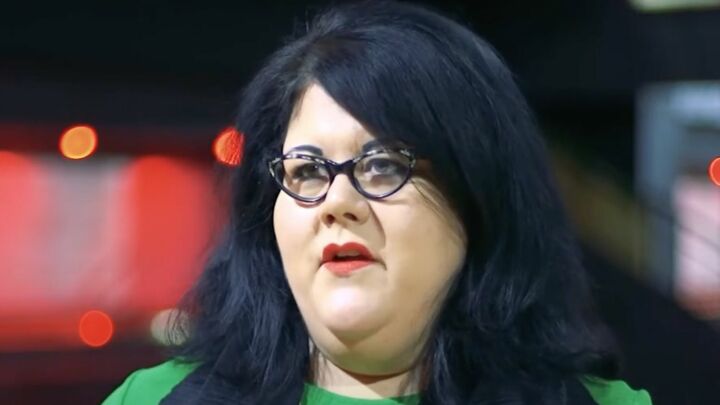Wide-angle reporting
A New York journalist looks enviously at European coverage of the Iraq war.

Want to read spiked ad-free? Become a spiked supporter.
Coming back to the USA after a month away, it only takes a while to recognise that this is a nation still at war. The signs are subtle but unmistakable: stick-on American flags on subway cars; aging posters in windows reading ‘We support our troops’ and ‘Bin Laden: Wanted DEAD or alive’; lists of American military casualties in the daily papers and TV news broadcasts; scare bulletins from the Office of Homeland Security threatening to postpone the November elections because of ‘alarming’ but vague intelligence reports; a buzz of conversation in the streets or among one’s friends about whether it’s safe to fly on one’s vacation, or whether Kerry’s candidacy will offer any real alternative to Bush’s aggressive stance.
There’s another sign that hasn’t been in evidence since the Second World War: the popularity of war news documentaries in movie theatres. Both Control Room by Egyptian-American filmmaker Jehane Noujaim and Michael Moore’s Fahrenheit 9/11 are drawing record crowds.
I saw the two films within the space of a few days. Control Room, a much-needed corrective about Al-Jazeera and its role in reporting the war, was showing at a downtown Manhattan multiplex to an audience made up mostly of young people just off work. They looked more like Wall Street investment types than left-wing ‘liberals’, though it has to be said that New York City isn’t a hotbed of Republicanism. A few days later at Sunday lunchtime I saw Fahrenheit 9/11 with a very different crowd – retirees in tennis shorts, affluent residents of Westchester, a suburb north of New York whose political demography is fairly evenly divided between the two main parties.
Neither audience was politically radical. It struck me that they weren’t there to register their protest against the war, but for a more urgent reason: to find information that hadn’t been available on TV or in the newspapers. The US public is hungry for news, and the mainstream media has by and large let them down.
I spent most of the past month in Denmark, where I not only heard several lengthy, informative reports on Danish Radio, but also saw a long TV documentary, no doubt using extensive footage from Al-Jazeera, that was unlike anything I’d seen in America. In part an examination of the creation of Moqtada al-Sadr’s Mahdi militia, the film also followed an American army patrol searching an Iraqi home for suspected weapons (they found a rocket launcher hidden behind a stove). The mixture of fear and misunderstanding on the part of both Iraqis and Americans humanised the war for me in a way that I hadn’t felt since its inception.
Documentaries like this simply don’t get aired on American commercial TV, at least not on ‘prime time’. Most of the news is limited to very short, often hyper-patriotic segments sanitised of any pictures of the dead or injured. Even on the margins of the electronic media – cable TV stations like CNN, late-night shows like ABC’s Nightline, Public Television’s Frontline or National Public Radio’s morning and evening news – the length of such a programme alone might be enough to keep it off the air.
The main reason is money. It costs too much to show long documentaries on prime time television, or rather too much money is lost by not showing the programme that advertisers have already paid for. Commercial TV networks are expected by their owners to clear a 40 per cent profit, so to pre-empt two or three ‘reality’ shows to show some actual reality would be to risk economic suicide.
But there are political reasons as well. Unlike the government handling of news coverage in Vietnam, the current administration has controlled the tone of war coverage in a number of ways. Not only has it created an atmosphere in which critical analysis of the war implies a lack of patriotism, but the idea of ‘embedding’ reporters with soldiers created loyalties among many reporters that made it difficult for them to be objective. Stories still float around of gung-ho reporters dressing in military uniforms and refusing to let colleagues from rival news organisations interview ‘their’ troops. Combine this with the fact that almost none of the American reporters had a command of Arabic or Iraqi history, and one is left with a group of journalists more likely to accept the official version of events than the independent ‘unilateral’ reporters that most foreign news services have in their employ.
The media also plays a very different role in Europe than in USA. The public service aspect of European media, which UK prime minister Tony Blair defended even as he was under attack by the BBC, is lacking in the USA, at least in the for-profit media. Commercial networks live in a state of constant anxiety about the possibility of federal regulation that might limit some of their profits. Recently the Federal Communications Commission considered further relaxation of the rules concerning cross-media ownership (Rupert Murdoch, owner of the Fox network, also owns newspapers and magazines), so it makes sense that media owners would want to stay in the government’s good books. Furthermore, NBC is owned by General Electric, a prime defence contractor, and ABC is owned by Disney, whose subsidiary was the original distributor of the Michael Moore film until they thought better of it. It pays for TV companies not to rock the boat.
This isn’t to say that the US electronic media haven’t had their moments. CBS’s Sixty Minutes was the first to show the Abu Ghraib photographs; some reporters, notably Ted Koppel of ABC’s Nightline, have filed excellent reports from the field; unembedded filmmakers have sometimes managed to find mainstream outlets for their films; public television’s Charlie Rose Show has featured a good variety of talking heads; and on the web ‘list serves’ are available for anyone who wants to hunt down facts on their home computers.
A satirical cable news show, The Daily Show, was probably the bravest voice in addressing issues that the networks and even public television were afraid to deal with. If nothing else, host Jon Stewart’s mischievous smile suggested that the official version of the war was directed at six-year-olds.
Comparisons between American and European print media are a bit more nuanced and complex. The New York Review of Books has been particularly good in reporting the war, and has done outstanding analyses of the weaknesses of war coverage in general. The New Yorker, Los Angeles Times, Washington Post, New York Times – all the usual suspects published good articles, though all have occasionally given into the temptation to accept the official party line.
If one selects a few of the major events in the war and compares the daily coverage in the New York Times, the Guardian, Le Monde and the Danish daily Information, the results are informative.
Coverage of 9 April 2003, when coalition troops reached the centre of Baghdad, seemed to differ only in emphasis. All four newspapers were careful not to exaggerate the jubilation in the streets; all gave plenty of space to the wave of looting that followed the ‘liberation’. The European newspapers spent more time on the ‘accidental’ shelling of the Palestine Hotel the day before that killed journalists from Al-Jazeera and European news bureaus, and the Guardian added that the Americans also strafed the headquarters of Abu Dhabi TV, which had its call letters painted prominently on the roof. But the New York Times was properly cautious and circumspect. Among its many articles was one by Alessandra Stanley that actually apologised for the American flag draped over the statue of Saddam Hussein that was pulled down in Firdos Square: Stanley pointed out that ‘it was exactly the image that the administration had most wanted to avoid’.
(Incidentally, Noujaim’s Al-Jazeera documentary goes further in looking at the Firdos Square incident, alleging that it was staged, and citing the fact that there were only young men in the square, who all spoke with non-Iraqi accents.)
If one looks at the other end of the war – the handover of sovereignty on 28 June 2004 – the differences in daily reporting between Europe and America were again more about shading than substance.
Le Monde and the Guardian were a bit cynical about the ‘ceremony’ that accompanied the transfer of power. The Guardian’s Brian Whitaker, for instance, wrote that ‘the half-dozen or so officials in the room clapped politely for about three seconds…and Mr Bremer…hastily left the country’ – and Information emphasized the ‘fragile’ nature of security in the ‘new Iraq’. The New York Times, on the other hand, ran a flag-waving picture on the front page where President Bush scrawled ‘Let Freedom reign!’ over a note from Condoleeza Rice, but they also devoted the larger portion of their copy to fretting over the future of Iraq, stating that even Bush’s advisers, in their ‘more candid moments’, don’t know if the damage from the occupation can be repaired.
The real differences between US and European print reporting are to be found in the area of context – which, by and large, the American press left out.
Subjects like the strategic interests of Israel and the role of Saudi Arabia have been taboo in the American press, and the pan-Arab indignation that Al-Jazeera covers extensively (and that makes its way on to European TV screens) is also unexamined. While the US press tends to personify America’s opponents, the press and public in Europe and Asia accept the loose, anarchic nature of al-Qaeda.
According to author Jonathan Schell, who spoke in March 2004 at a conference on ‘Media and the War’ at the Berkeley School of Journalism, without this awareness of context the American press accepted a narrative about the possibility of nuclear weapons in Iraq while ignoring other narratives, such as the actual possession of nuclear devices by Israel, Pakistan, and North Korea. Examining alternative narratives might have provided ways for the press to understand the hostility of ‘liberated’ Iraqis and to avoid making serious faux pas, such as recent articles in the New York Times insisting that the ‘insurgents’ consisted of remnants of Saddam’s armed forces and ‘foreign’ intruders rather than what now appears to be the case: that among the insurgents are nationalist groups without allegiance to either Saddam or al-Qaeda.
On 26 May 2004 the New York Times made a startling admission. In a long article entitled ‘FROM THE EDITORS: The Times and Iraq’, they confessed that there were ‘instances of coverage that was not as rigorous as it should have been’. The editors went on to blame everyone from unnamed reporters and editors to US officials, a ‘circle of Iraqi informants, defectors and exiles’, and especially Ahmad Chalabi, once the darling of the press and the Bush administration, but now their whipping boy. However, the larger culpability lay with the New York Times itself, which was doing exactly what Schell had warned about – accepting someone else’s version of reality rather than examining several versions and coming to its own hard-won conclusions
Of course the major culprit on the New York Times staff, who wasn’t named in the mea culpa piece of 26 May, was Judith Miller, whose articles on the existence of nuclear, biological and chemical weapons are now largely discredited. The more one looks at her story, which has been well covered in the European media, the more one can’t help seeing it as typically American – ambition and aggressiveness inhibiting her ability to look at the complexity of experience. In a way, Miller mirrors the administration’s own rush to judgment.
I wish I could say that the popularity of news documentaries in movie theaters and the 26 May article by the editors of the New York Times were indications of a new contrition and depth in the reporting of the American military presence in the Middle East. This simply isn’t the case. If anything, the reporting will most likely diminish, not increase. If one looks at the hopelessly scanty coverage of Afghanistan in the American media, one can only surmise that the same will hold true for Iraq. News organisations have reduced their foreign desks over the past 20 years, and there’s no indication that this will change.
In lieu of training reporters in Arabic and other Eastern languages, the least that should be done is to broadcast material from Al-Jazeera, Al-Arabiya, and other international news organizations. But as Michael Massing writes in the New York Review of Books, ‘In the current climate… any use of Arab or European material…could elicit charges of liberalism and anti-Americanism. The question for American journalists is whether they really want to know what the Iraqis themselves, in all their complexity, are thinking and feeling’.
George Blecher is based in New York, and reports for a number of European publications about American politics and culture. This article was originally published on 31 July 2004 in the Danish daily Information.
Celebrate 25 years of spiked!
A media ecosystem dominated by a handful of billionaire owners, bad actors spreading disinformation online and the rich and powerful trying to stop us publishing stories. But we have you on our side. help to fund our journalism and those who choose All-access digital enjoy exclusive extras:
- Unlimited articles in our app and ad-free reading on all devices
- Exclusive newsletter and far fewer asks for support
- Full access to the Guardian Feast app
If you can, please support us on a monthly basis and make a big impact in support of open, independent journalism. Thank you.






Comments
Want to join the conversation?
Only spiked supporters and patrons, who donate regularly to us, can comment on our articles.